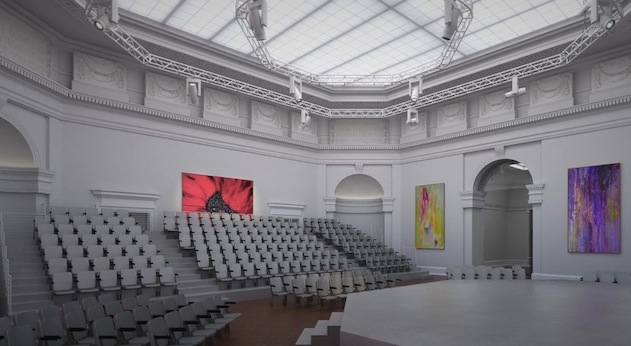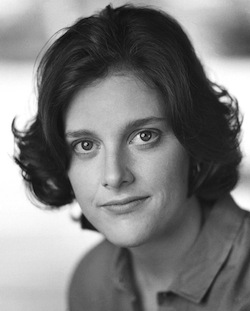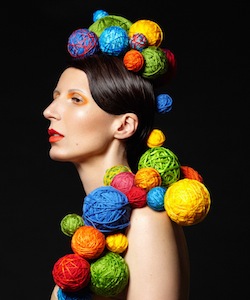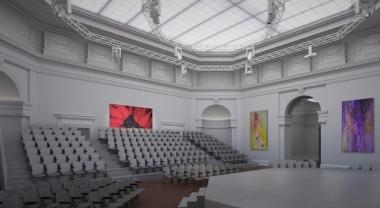
One of the many wonderful things about grand opera is the grandeur of the space. The almost miraculous way the sound envelops the listener, as the pageantry of the distant stage becomes myth unfolding in real time. So why are many large companies now performing also in smaller, secondary venues, even off-site, non-theatrical venues?
It isn’t only companies without a major venue, like West Edge Opera, whose recent Lulu was done in an abandoned train station. Hamburg Staatsoper and the Royal Opera have also performed in old train stations. Part of this, surely, is our culture’s recent fascination with the idea of “pop-ups.” Stores appear for a month and then vanish, food trucks pull up and voilà, you have a restaurant.
San Francisco Opera is broadening its offerings to include pop-up events, such as the upcoming April Fool’s event which will take place at The Chapel, a music venue and bar on Valencia Street. And they also had a presence this year at the increasingly popular Edwardian Ball. But their recent adjunct creation, SF Opera Lab, is much more than a one-time event, or a fly-by-night gimmick to draw hipsters in with eclectic programming and a less fancy atmosphere.

Under the guiding hand of Director of Programming Elkhanah Pulitzer, the Opera Lab’s first season – which opened this past weekend with baritone Matthias Goerne performing Schubert’s Winterreise alongside 24 animated films by artist William Kentridge – will offer a varied series of performances designed to engage, surprise and delight audiences, and all from a different vantage than you might find at, “the Big House” as the Opera Lab’s website is calling it. The tagline for the season is “Intimate, eclectic, and adventurous.”
The venue for SF Opera Lab is the newly christened Dianne and Tad Taube Atrium Theater, which opened in February with a Schwabacher Debut recital. The 299-seat theater is part of a larger complex, the 38,000 sq. ft. Diane B. Wilsey Center for Opera, which utilizes newly renovated spaces on the fourth floor and basement of the War Memorial Veteran’s Building at 401 Van Ness Ave.
Surely part of the appeal of the financially lower threshold in the smaller space is the greater possibility for experimentation and nurturing of talent. As Pulitzer says, “The goals for SF Opera Lab are to foster the development of ideas, explore working methods, cultivate future talent, to build creative partnerships, and expand our audience. Those are the key touch points.” No small tasks there.
On the topic of cultivating future talent, Pulitzer says, “there are a lot of fantastically talented people within our organization already, who help bring life to the main stage all the time, but who might not be at the front-facing part of those conversations with an audience on the main stage. But in this space they could be given a more significant role in terms of the artistry of it. So, maybe you’ve got an assistant lighting designer from the main stage who could light something here. If you look at the ROH (Royal Opera House) and their work at the Linbury, they certainly have cultivated great directors, choreographers, and designers through that smaller space, who have ended up working on the main stage. (The Linbury Studio Theater and Foyer is currently closed for renovations and will reopen in 2018 with a 400-seat theater and other improvements and enhancements to the space.)
But as the ambitious list of goals cited by Pulitzer shows, the Opera Lab is not a farm league baseball team, whose sole intention is the cultivation of talent to fuel the major league team. And to those who say that a smaller venue like this may dilute the grander opera experience, Pulitzer explains that this more intimate kind of theater is its own, special experience.
When you are in the grand opera you are a good maybe 35 to 60 feet away from the stage, if you’re sitting up close [in] orchestra seats. So in terms of having that kind of enveloped orchestral shower, so to speak, that’s a wonderful and powerful experience, but it’s not one that’s in close proximity. Having these smaller venues, where you can be five feet away from a singer or instrumentalist – that kind of relationship and that power of that level of proximity to the artist making the work – is an entirely different experience. It’s not better, it’s not worse. It’s simply incredible powerful and special in an entirely different way.
And in terms of the quality of sound in this particular room, we also have the Meyer Sound Constellation, which has already proven to be a really remarkable experience acoustically in the space. We’ve done a few, intimate, one-off performances to test out how things are working, and the sound there is just incredible. I’m not sure how else to describe it. I think as people get to know the Atrium Theater and experience that proximity, it’s just another way of deepening one’s contact with the human voice in a theatrical setting.”
The name of the Constellation system from Meyer Sound may ring a bell, as Zellerbach Hall uses Constellation, and recently Berkeley Rep celebrated adding the system to their renovated and renamed “Peet’s Theater.” The system employs concealed microphones throughout a space, with dozens of speakers placed inconspicuously, and it has the capacity to control reverb, volume and other characteristics, all to suit the voices, instruments, and type of performance. Those little curved wires sticking down people’s cheeks and out from under their wigs, held down with a little piece of flesh-colored tape are a thing of the past here.

The offerings of Opera Lab’s premiere season range from a solo show for one of opera’s biggest stars, Deborah Voigt, to a family-friendly event screening of The Triplets of Belleville with live accompaniment, and an a cappella chamber opera by Serbian-born Ana Sokolović.
Sokolović is a good example of the kind of artist that justifies a smaller venue within the auspices of a major opera house. An established composer, many would say an important composer, she has been based in Montréal for two decades, accruing a long list of prestigious awards and notable commissions, most recently a commission for a main-stage opera for the Canadian Opera Company. But many Bay Area music lovers may never have heard of her.
Like Pulitzer, Sokolović is interested in the intersection between art forms, and the way they inspire and influence one another. “Some of these experiences relate to my background, which is Balkan, and other things from which I’m taking inspiration are visual arts, or even mathematics and geometry, etc. So I can say I work very much in collaboration with other arts, not because music is not enough, but in a way because any kind of creation is similar for me. I was an actress when I was young, and I did some staging, all these different points of view are similar for me.”
Her six-woman, a cappella opera Svadba-Wedding takes place the night before a wedding, and uses Serbian song to tell the story in a tight arrangement of voices. “There is only one solo in the show,” Sokolović said when SFCV reached her in Belgrade earlier this week. She also explained her desire to do the piece in Serbian.
In the beginning, I thought it would be in English, but I realized how the Serbian language would be interesting. Serbian is my mother tongue and I wanted to be inspired, not only by the meaning, which is extremely simple, but to find the characteristic melody and rhythm of the language and to make music of it. My idea is not for the audience to understand every word. My idea is to pass through this culture and to communicate some kind of feelings that are related to the music, but speak universally. I know it sounds a little bit weird, but I even in the beginning didn’t want to have the surtitles, because sometimes we can have a concert version of the piece, without surtitles, and everything works. What is happening emotionally, everything is clear. The idea is to offer something we can physically feel. Pure chant. Pure voice.”
Above: Opera Philadephia's promo video for its 2013 production of Svadba-Wedding
Audiences unaccustomed to contemporary music should have little trouble enjoying Svadba-Wedding. As Sokolović puts it, “For audiences, dissonant is not a technical explanation. It’s more the character they’re explaining. Dissonance means it’s an interval, like a seventh or a minor second, but audiences use that word to mean difficult, or not good. Why do I mention this? Because I had a comment after this opera, Svadba, someone said, “Oh, your music is not contemporary music.” And I said, “What do you mean?” And they said, “Because it’s not dissonant.” But it absolutely is dissonant, all the way through! It’s clusters, and it’s very difficult to sing. But for the audience, they don’t hear this technicality, they don’t feel how it’s made, and they don’t feel it’s something that disturbs them.”
Pulitzer and Sokolović both seem intent upon bringing special, intimate moments of theater to audiences, and both women have early professional experience in the theater. As to the line between theater and opera, Sokolović had this to say: “What is the same is dramatic line, between any dramatic piece which needs time. Even film. The techniques could be different, but the dramatic line hasn’t changed since Greek drama.”
Pulitzer concurs, saying, “I don’t know why that distinction [between opera and theater] is made so adamantly.” But she clearly enjoys and can illuminate what some of the differences are between what you’d experience at the opera house, vs. what will happen at the Atrium Theater. “If you have a house that seats 3,200 and a 65-foot opening proscenium and a pit that can hold up to 95 players,” she says, “it requires and demands a certain quality of visual –I don’t know what to call it – splash! You have to fill that frame. And when you’re suddenly scaled down to a room that’s 65-foot square and seats under 300 people, it’s an entirely different range of tools you can apply. You can work in the world of [Bertolt] Brecht and [Joseph] Meyerhold, and call a cardboard box a wedding cake if that’s what you want to do. And that activation of the audience’s imagination, to fill in the void or the blanks, that is essentially the key to what I care most about in terms of what we’re trying to do.”
In addition to the availability of another theatrical venue, the public will enjoy gallery exhibits at the Veteran’s Building location, and many folks at the opera will be finding some breathing room at the spaces there, which include a large rehearsal space and the John M. Bryan Education Studio, as well as a long-awaited suitable archive space (the Edward Paul Braby San Francisco Opera Archive), the substantial addition to office facilities, and the Norby Anderson Costume Studio. As one can tell from the various names attached to the new Center, many patrons stepped forward to help see this vision through, and opera fans in San Francisco will have the chance to remember their generosity for many years to come.
The new theater also encourages the company to offer more frequent and accessible lectures and events, and at the heart of it will be the SF Opera Lab. With the ambitious first season now underway and tickets already gone for some events, an interested public would do well to remember, that 299 tickets can be gone in a flash.

